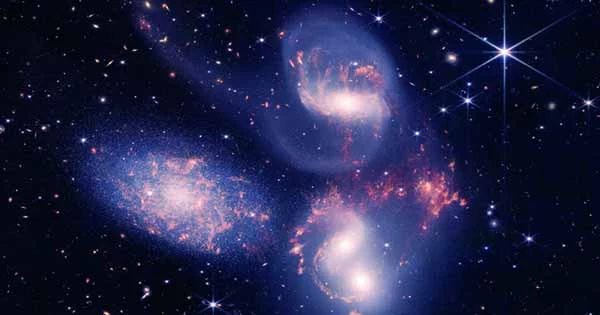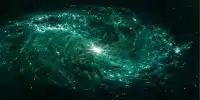Since it started operating last year, the James Webb Telescope has improved our ability to see celestial objects and revealed previously hidden characteristics. Now, research done by an international team of astrophysicists suggests that it may also fundamentally alter our comprehension of the universe.
Six potential galaxies that developed just 500–700 million years after the Big Bang was discovered by researchers after they examined images captured by the telescope near the Big Dipper. The team’s calculations suggest that they may contain as many stars as the Milky Way, which is what makes them peculiar rather than the fact that they could be almost 13 billion years ancient. According to current cosmological theory, they shouldn’t exist because there shouldn’t have been enough matter present at the time for the galaxies to produce as many stars as our galaxy.

The images revealed to the scientists a few hazy but incredibly bright dots of light that, to our instruments, appear red, suggesting that they are old. One of the study’s authors, Joel Leja, told Space that since young, blue galaxies appear to us as “objects which have just recently formed out of the primordial cosmic soup,” scientists usually expect to see them when looking into the distant past. Remember that it takes time for light to reach Earth; therefore, when we watch telescopic images, we are basically looking back in time.)
“For the first time, we peered into the very early cosmos without knowing what we would discover. It turns out that what we discovered is so unforeseen that it actually poses challenges for science. It casts doubt on the theory of early galaxy creation as a whole “said Leja. Even older galaxies that formed about 350 million years after the Big Bang were earlier photographed by James Webb. They are small, though, and pose no threat to our understanding of astronomy.
These six galaxies were producing hundreds of stars per year soon after the Big Bang, which explains why they look old and massive. The Milky Way, in contrast, only produces one to two new stars annually. Furthermore, despite having as many stars as our galaxy, these possible galaxies are about 30 times smaller and more compact.
The scientists acknowledge that it’s possible that the hazy red spots they saw were something else, such as supermassive black holes or faint quasars. In contrast to the estimated size the scientists obtained from their computations, they might actually be smaller. The group believes they might have official confirmation sometime next year, but they still need more information and spectroscopy to confirm their results.















